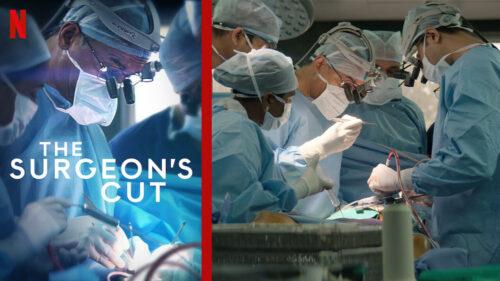It is not easy to sit with a pregnant woman while monitors all around you tell you her fetus’s heart is slowing; her child is dying.
This is the situation fetal surgeon Kypros Nicolaides of King’s College Hospital found himself in. His own heart racing, he pushed blood directly into the fetus’s heart just in time, saving its life. Over the course of four episodes, Netflix’s The Surgeon’s Cut follows and humanizes Kypros and three other surgeons, each revolutionaries of their fields. Like life, the show starts with pregnancy and birth, where Kypros works his miracles.
When he performs surgeries, Kypros asks his patients to hold his arm so they feel they are on a team with him. He says his role as a surgeon is to serve as a guide, leading the parents through complex operations, some of which he developed himself.
The second episode follows Mayo Clinic neurosurgeon Alfredo Quinones-Hinojosa, fondly referred to as Dr. Q. While Kypros is enthralled by the beginning of life, Dr. Q says the brain holds our humanity. He compares surgery to a dance: the brain dances with the rhythm of the heart and his body dances as his feet and hands control careful surgical movements. In these moments, when he commits the sacred act of opening someone’s skull, he feels intimately connected to his patient’s soul.
Dr. Q sees each surgery as an obstacle, and his past empowers him to face these obstacles with determination. Dr. Q left Mexico at nineteen and became a farm worker, a cleaner, then a welder, all while learning English at night school. Seven years after leaving the farm, he began medical school at Harvard University.
While the brain holds our humanity, the liver is where our souls are—at least according to Nancy Asher, a transplant surgeon at the University of California San Francisco. She is artful, impatient, and in constant pursuit of excellence. “I think you have to have fearlessness tempered by fear of failure,” Asher says while describing the job of a surgeon. Her impact extends beyond the operating room: she invests in mentorship for women in surgery, she is an activist to prevent organ trafficking, and she has published a large body of research.
A surgeon’s greatness depends on something beyond solely technical skill, and like Asher, Devi Shetty’s impact is immeasurable. Devi Shetty is a heart surgeon in India. Describing his work as Mother Teresa once did, Shetty says that when God created babies who had holes in their hearts, He saw the mistake and sent Shetty to help them. Devi has worked hard to develop a relationship with rural India, and the hospital he created can now offer operations to thousands of patients who otherwise could not afford them.
The Surgeon’s Cut gives us a glimpse into the trials and excitements of surgery—from birth to death, from fetus to brain to liver to heart. The show reveals who these surgeons are at their cores: creators, visionaries, and artists.

